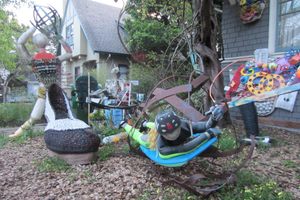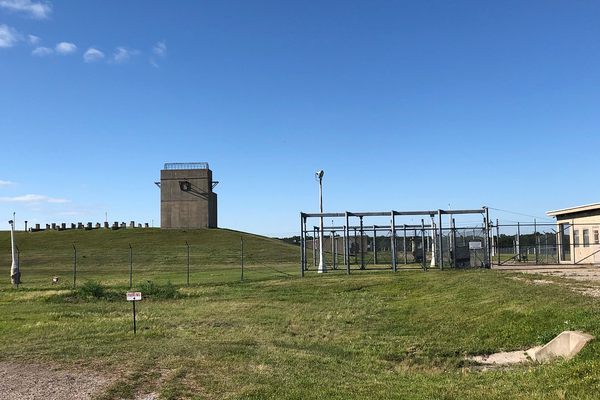About
Used as an anti-aircraft missile launchpad during the Cold War, today the abandoned SF-O9C Nike Missile Radar Data Acquisition site is home to several stone cats, placed there by a mysterious artist.
The missile site is hidden in the hills of Wildcat Canyon Regional Park in Richmond, California. No plaque adorns the historic spot where, during the Cold War, radar operators worked around the clock monitoring the skies of the Bay Area, watching and waiting for Russian bombers in the dead of night.
A mile south of the SF-09C location was the Nike Missile launchpad itself, where missile operators were prepared at any moment to bring up to the surface one of 24 Nike-Ajax supersonic anti-aircraft guided missiles, and fuel them for launch. The missiles, each weighing 2,000 pounds, flew at twice the speed of sound, and had a range of 25 miles.
Hiking to the top of the San Pablo Ridge, you can walk to the very spot where the top-secret SF-O9C site once stood. Sadly, nothing remains today but a few concrete pads and roads leading to nowhere. The untended site is a piece of forgotten history in the Bay Area. The administration and housing buildings at the site were hastily torn down and the missile launch and storage facilities were filled in with dirt.
There had previously been several stone cats installed by an anonymous artist, which are no longer at the site. No one knows who installed the cats, or why, but they added a bit of whimsy and feline friendliness to the lonely hilltop site until their removal.
In 1958, the U.S. army transferred control of all 11 Nike Missile Sites over to the National Guard. By 1962, the sites were being quickly dismantled as military technology evolved, making an attack from long-range bombers unlikely. The defense strategy of the United States had changed; the era of mutually-assured destruction had begun, and by 1974, the last four remaining Nike Missile bases in the Bay had closed.
The National Guard turned the most famous of these, the SF-88 Nike Missile Site in Mill Valley, over to the National Park Service in 1975. Today, thousands of tourists visit the well-preserved park each year, famous for its extensive collection of Cold War artifacts.
Related Tags
Community Contributors
Added By
Published
May 29, 2018














































